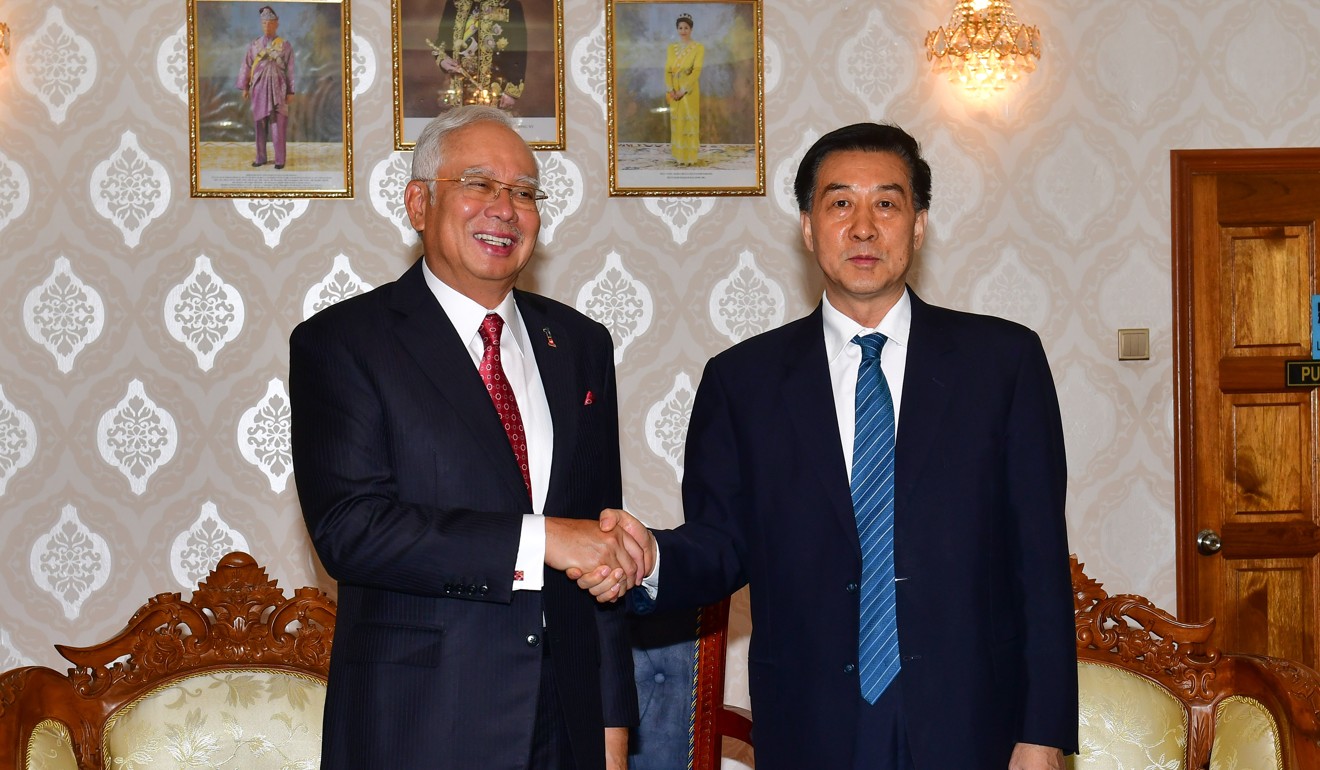
Beijing looks to Malaysia for fast track to support in region
Key belt and road rail link is an expansion of China’s soft power at a time when it needs allies, observers say
Beijing is using a multibillion-dollar railway project in Malaysia to win support from a key Southeast Asian nation at a time when ties are strained with other countries in the region.
The US$13 billion East Coast Rail Line was launched on Wednesday by Chinese State Councillor Wang Yong and Malaysian Prime Minister Najib Razak.
The 600km railway line will connect ports on the east and west coasts of the Malay peninsula and is a key part of Beijing’s huge belt and road trade plan as it would offer an alternative route for cargo shipments.
It has prompted speculation that it could ultimately alter current regional trade routes – which run through the Strait of Malacca and the South China Sea via the Port of Singapore – when it is completed in 2024.

Najib hailed the project as a “game changer” in a groundbreaking ceremony on Wednesday, while Wang said it was a sign of the friendship between the two nations.
Observers see the controversial railway line as an expansion of China’s soft power at a time when it needs allies in the region.
Although Beijing’s relations with the Philippines have improved since an international court in The Hague invalidated China’s claims to sovereignty over most of the South China Sea last year, Vietnam has emerged as its most vocal rival claimant.
At the Association of Southeast Asian Nations forum in Manila this week, Hanoi pushed for a joint communique to express concern about “extended construction” in the disputed waters but failed to win support from other members.
Beijing’s relations with Singapore also deteriorated after the city state supported last year’s tribunal ruling, and as it edges closer to the United States. Since Singapore will be the chair of Asean next year, mainland Chinese observers said Beijing would be trying to ensure that Kuala Lumpur did not also pivot towards the US. Within Asean, Beijing does have the support of Cambodia.

Ni Lexiong, a naval expert at the Shanghai University of Political Science and Law, said the recent cooperation between China and Malaysia signalled Beijing’s desire to reduce Singapore’s influence.
“At the moment, 70 per cent of China’s oil and gas imports pass through the Strait of Malacca,” Ni said. “Because of that, Singapore has been able to control China’s commercial and military access through the strait, and has used this as leverage in its balancing act between China and the US.”
Xu Liping, a researcher at the Chinese Academy of Social Sciences, said Malaysia had in recent years become one of China’s closest partners in the region. “The security cooperation between China and Malaysia will continue to deepen and Malaysia has been supportive of China on multilateral occasions,” he said. “But whether Malaysia will become the next Pakistan or Cambodia remains to be seen because Malaysia values its ties with the US as much as with China.”


